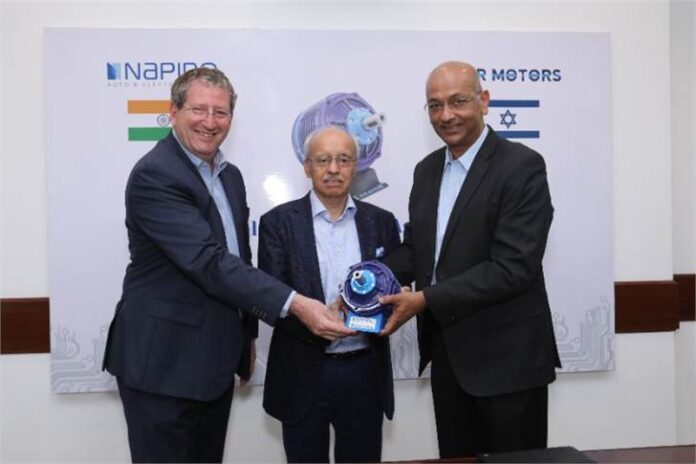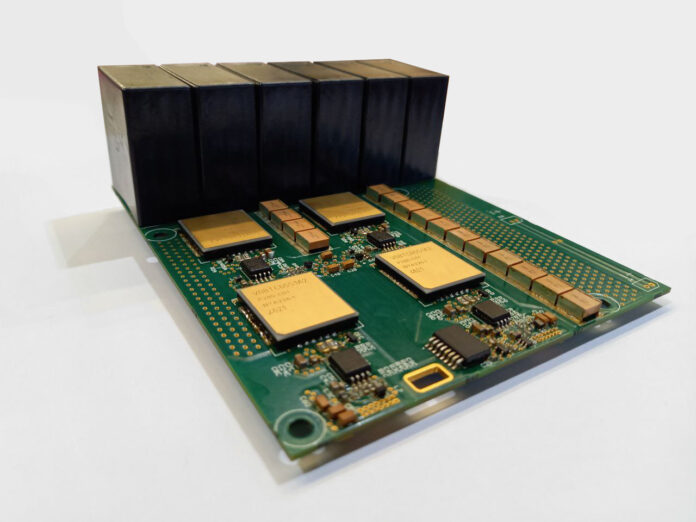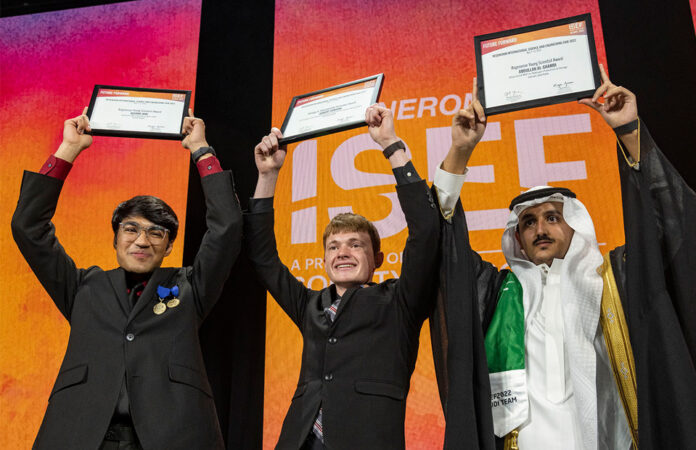EVR Motors is the inventor of a newly designed and patented motor topology – the Trapezoidal Stator – Radial Flux Permanent Magnet (TS – RFPM) topology to develop and manufacture motors for electric two-wheelers in India.
Recently, a partnership has been established between the motor manufacturer and Napino Auto & Electronics. This is EVR Motors’ second partnership in India; earlier it had inked a partnership with Omega Seiki Mobility for the electric three-wheeler segment.
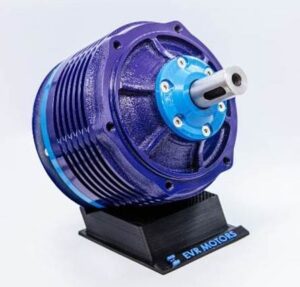 The TSRF technology is said to be distinctive because of its lightweight and compact design. The proprietary TS Topology has a unique trapezoidal tooth shape core structure, which improves flux distribution, reduces leakage, and gives superior heat dissipation with good thermal capacity.
The TSRF technology is said to be distinctive because of its lightweight and compact design. The proprietary TS Topology has a unique trapezoidal tooth shape core structure, which improves flux distribution, reduces leakage, and gives superior heat dissipation with good thermal capacity.
The TS topology can be tailored for a wide variety of requirements and enable multiple variations based on the same design and tooling. The air-cooled motor for two-wheeler application weighs under 7kg, has a diameter of 130mm and is said to be a perfect fit for Indian electric two-wheeler applications. The modular voltage range is between 48- 96V.
The partners will pool in their expertise of designing and manufacturing the all-new TSRF motors at Napino’s manufacturing facility.
India, EVR Motors’ TSRF technology on Napino bicycles and tricycles
Heft project for a new recyclable electric motor
Heft is the name of a European research that will be accomplished by the half of 2026, with the participation of Alma Mater Studiorum of University of Bologna and the Spanish University Mondragon Unibertsitatea. The target is developing a new motor for electric cars. Researchers are working at new synchronous permanent-magnet drive system able to assure lower costs, better efficiency and higher power, reducing the use of rare earths by even 50-60%.
The project, in fact, complies with Erma (European Raw Materials Alliance) goal, which intends to reduce the Old Continent’s external dependence on the front of the provisioning of rare earths, with at least 20% internal support to the demand within 2030.
Among the other targets, also the strengthening of the circular economy, with a new fully recyclable model, able to create development on the territory, meanwhile improving the green all-round approach. The European Union pursued the Heft project, allocating 4 million Euros in its favour, in the ambit of Horizon 2020, instrument of funding to the scientific research and innovation by the European Commission. The project started on December 1st 2022 and will go on for 42 months.
The specialists involved in the project are facing a series of innovative challenges concerning its configuration, focusing efforts on SiC inverters and on materials. For the validation of these high-efficiency low-cost innovations two successful electric cars will be taken as benchmark: Fiat 500e and Volkswagen ID.3.
Designing e-motors with artificial intelligence

The two Japanese giants Mitsubishi Electric Corporation and Toshiba Mitsubishi-Electric Industrial Systems Corporation (Tmeic) have recently announced they have developed a support system to the design of electric motors that integrates the artificial intelligence.
It is AI Maisart® technology by Mitsubishi Electric that allows drastically reducing the necessary time to implement projects of electric motors that can reach the same performances as conventional engineering methods manually used by skilled engineers.
What is expected? Tmeic will adopt the system since 2024 to design electric motors for pumps, compressors and blowers in industries. It is a precious opportunity because it allows, in simpler manner, adjusting design specifications to balance performances versus design, such as for instance the energy efficiency with regard to motor sizes.
Power converters, gallium nitride technology
The collaboration between Power Electronics Innovation Center (PEIC) of Turin Polytechnics and Marelli Motorsport, the Motorsport business unit of Marelli global automotive supplier, expert in the development of hybrid and electric systems for motorsport, concerns the area of gallium nitride technology (GaN) for the power electronics intended for electric motors.
The collaboration is aimed at the design and prototyping of an innovative multi-level 900-V high-power inverter for electric traction, based on GaN technology.
It is a forefront technology that can reach record switching frequencies and low switching energy, allowing a drastic reduction of passive components.
GaN technology opens new horizons in the ambit of the design of power converters, the field where the collaboration aims at excelling in terms of high-efficiency multi-level architectures, gate driving, reliable and optimized parallelization of devices, technologies of high-frequency and temperature capacitors, integration of capacitors and semiconductors on printed circuit boards aimed at the cost reduction, advanced cooling solutions.
The concept study started in 2021 and it is currently in the prototyping phase, which provides for two development stages by the end of 2022.
Young scientists, awarded the project of the magnet-free synchronous reluctance motor
The Regeneron International Science and Engineering Fair is a big international STEM competition of higher schools that takes place every year in the United States. In the last edition, the young scientists of higher schools worldwide won almost 8 million dollars in awards and scholarships.
Among them – obtaining a prize worth 75,000 dollars – there is also a student committed to a project whose mission is revolutionizing the world of electric motors. He is the seventeen years old Robert Sansone from Fort Pierce, in Florida. The teenager has already accomplished over 60 projects connected with the engineering world and today the focus is on his project to improve the synchronous reluctance motor, which can operate without magnets and without using rare earths.
We cannot reveal a lot because the technology is not patented, yet. However, we can say the teenager, not relying on many resources to implement advanced motors, has to manufacture a scale prototype by using a 3D printer and exploiting plastic. The delivered torque exceeds 39%, whereas efficiency is 31% higher at a rotation speed of 300 rpm. At 750 rpm, the efficiency has improved by 37%. Clearly, they are much lower rotation speeds than motors on trade because the prototype has not been brought to higher rotation rates to avoid overheating plastic components. Maybe that money won will allow him further developments.
Multi-three-phase drives are becoming more and more widespread
The objective of PEIC, Power Electronics Innovation Center integrated into Turin Polytechnics, is to provide power conversion solutions for electric vehicles powertrains and chargers, more electric aircrafts, energy production and harvesting from renewables, smart transformers for electrical grids, more efficient variable speed drives, just to name some strategic applications.
Among the latest contents published on PEIC social channels, there is the fact that the multiphase solutions, multi-three-phase drives are becoming more and more widespread in practice as they can be modularly supplied by conventional three-phase inverters. Let us go into detail: most torque control solutions for multi-three-phase motors currently use vector space decomposition (VSD). In this way, the conventional control schemes for three-phase drives can be implemented, reducing the complexity of the control algorithm. However, this advantage is practically lost in the case of open-three-phase faults since additional post-fault control modules need to be implemented. Much attention is focused on Fault-Tolerant Torque Controller Based on Adaptive Decoupled Multi-Stator Modeling for Multi-Three-Phase Induction Motor Drives. It is a novel control approach that allows using any control scheme developed for three-phase motors to perform the torque regulation of a multi-three-phase machine both in healthy and faulty operation.
Three phase Induction motor and an SPM motor
Hussain Shafi, Electric Vehicle Engineering Student at UNIBO has published a project in the ambit of the course Electric Motor Design delivered by Prof. Giacomo Sala.
«In this report we have designed a 3 phase Induction motor and an SPM (Surface Mounted Permanent Magnet) motor both with different specifications. All the analytical equations are implemented in Matlab for preliminary sizing of motor and useful graphs while the FEA analysis is done using FEMM software which is an open-source software that can simulate the Electromechanical models. By using some additional libraries for Matlab, and it is possible to see how it is done in the report».
The project involves designing and sizing of SPM Motor and Induction Motor and the thermal aspects were also realized in this project.
A 3-phase induction motor is an electromechanical energy conversion device which converts 3-phase input electrical power into output mechanical power. A 3-phase induction motor consists of a stator and a rotor. The stator carries a 3- phase stator winding while the rotor carries a short-circuited winding called rotor winding. The stator winding is supplied from a 3-phase supply. The rotor winding drives its voltage and power from the stator winding through electromagnetic induction and hence the name. IMs are less expensive, do not suffer demagnetization, and they are often more reliable and simpler to manufacture as compared to SPM motors. The disadvantage of this motor typology is its insufficient performance in terms of efficiency and power factor.
Hpe Coxa, artificial intelligence laboratories to develop electric motors
About two years ago Hpe Coxa, company specialized in services of engineering, design and precision manufacturing for the sectors of automotive, motorsport, automation, aerospace and defence, inaugurated in Modena the two E LAB and Ai LAB laboratories that establish the company’s collaboration with the Universities of Bologna and Modena in the most advanced technological fields. In particular, E LAB, in collaboration with the University of Bologna and UniMoRe, has made students work at the design, engineering and implementation of an electric motor, supervised by “senior” engineers: in just nine months they have given birth to a unique item, the “demonstrator”. Today, they go on innovating in that direction and in Modena the excellence centre for the Artificial Intelligence is established, due to the collaboration between Hewlett Packard Enterprise and HPE COXA, further raising the bar of the development of solutions, including electric motors. This synergy will lead them to explore together the new opportunities of the data age for the industrial sector.
Combining design skills and competences that range from high-performance mechanical engineering to the most recent IT technologies, the two partners will develop a common ecosystem committed to innovation and based on Open Innovation principles.
Electric motor with recycled magnets?
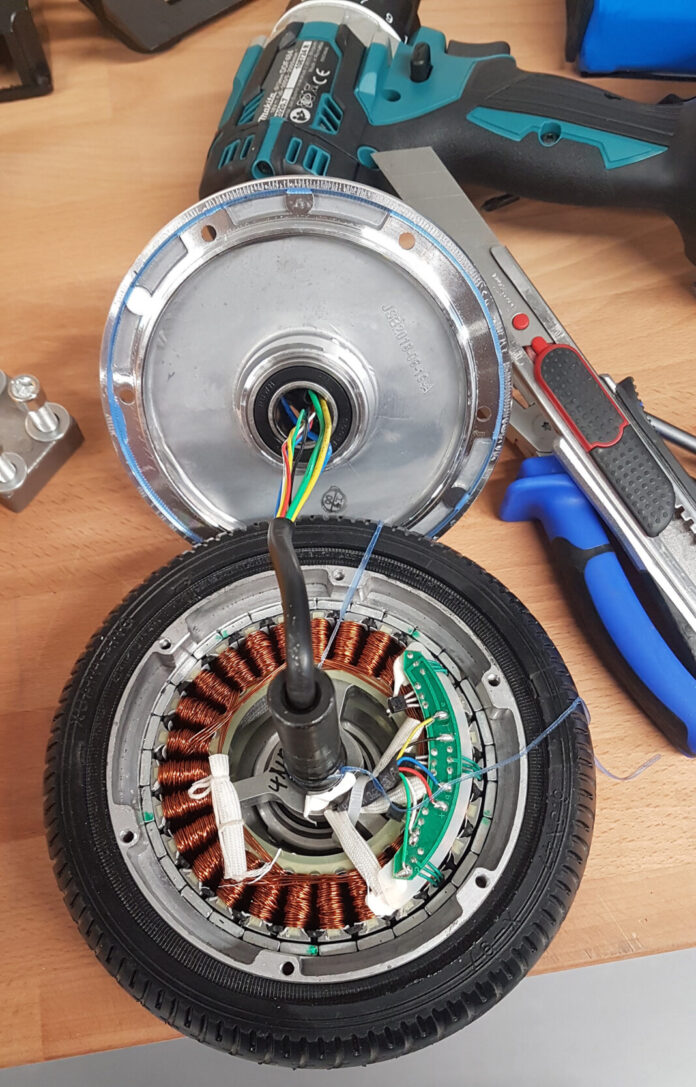
Recycled magnets can be used to power motors in the electric mobility sector, without any power loss compared to new magnets. As proven by FunMAG project, developed by Fraunhofer Institut: «During the process, magnets absorb a bit of oxygen, which results in a slight deterioration of quality, but we can contrast it by adding from 10 to 20 percent of new material or by further processing magnets’ microstructure”, explained Konrad Opelt, project head and material scientist.
Neodymium-based magnets are the most powerful at disposal on the market and represent about half of motor’s costs because, as the name suggests, they contain rare earth elements like neodymium or dysprosium. The mining activity releases poisonous by-products that can pollute groundwater, causing damages to both people and to nature. Although the manufacturing process is expensive and problematic, magnets are generally rejected and melt together with steel scraps.
Nowadays researchers are working to optimize the treatment during the recycling process.
The influence of rotors bar form on SPIM performance
Mandatory regulations are published worldwide for the efficiency of line-operated electric motors. Compact single-phase induction motors (SPIMs) will not be spared in terms of effectiveness and efficiency, as new restrictions are set to be implemented no later than July 2023. As a result, the efficiency of capacitor-run SPIMs will be required to exceed (now) normal values and meet the standards of the IE3 performance class. Less consideration has been given to the influence of rotors bar form on SPIM performance and starting capabilities. It is a key topic that has been investigated by a recent study concerning the rotor squirrel-cage layouts with eight distinct bar forms, published on MDPI academic container.
The study is entitled “Effect of Rotor Bars Shape on the Single-Phase Induction Motors Performance: An Analysis toward Their Efficiency Improvement”, Energies 2022, with authors Chasiotis, I.D., Karnavas, Y.L., Scuiller, F.
The already published research works investigated several design, control, and manufacturing aspects. Nevertheless, less attention has been devoted to the study of the rotor bar’s shape impact, both on the SPIMs’ efficiency and starting capability. This gap is filled in this work by examining rotor squirrel-cage configurations with eight different bar shapes for the case of a four-pole/1.0 HP capacitor-run SPIM. A sensitivity analysis, which involves the simultaneous variation of the bar’s cross-sectional area, run-capacitor value, and auxiliary to main winding turns ratio, is performed. The motor’s electromagnetic behavior is estimated through finite element analysis. Through the acquired results, useful directions toward the SPIMs’ efficiency enhancement are provided, while simultaneously conclusions—not found elsewhere—are drawn concerning performance quantities, such as the motor’s starting current, currents shift angle, particular losses and breakdown torque.
The stator and rotor core of the SPIM are composed of thin laminae of electrical metals. The squirrel-cage of the rotor is manufactured of a conducting alloy by die casting. Because of its inexpensive cost, aluminium alloy is more commonly used in the fabrication of tiny SPIMs, and it provides for greater freedom in the design of the bar.

